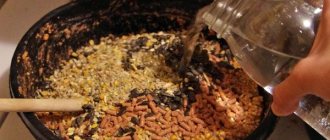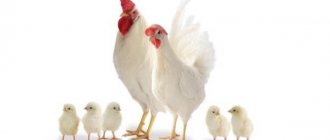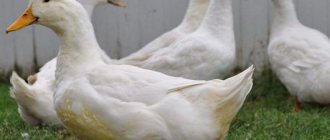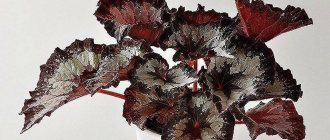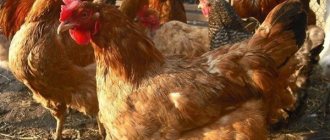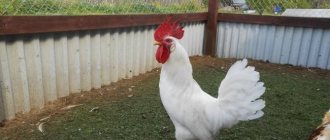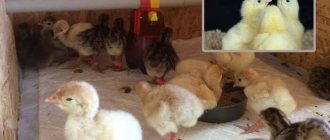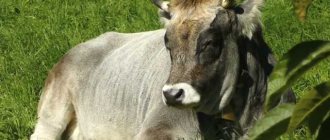Origin story
Photo:
The homeland of the Master Gray breed is France or Hungary. These chickens were bred artificially by breeders. It is believed that this breed was bred so that birds could be kept in small private farms without any additional care, and at the same time the bird would produce a lot of meat and eggs.
However, Master Gray chickens turned out to be such a successful breed that they are now bred in large poultry farms. Today, the breeding and sale of chickens is carried out by the Hubbard company, which has poultry farms in France and the USA.
Diseases and their detection
Parasites cause great harm to the health of chickens, so their timely detection is very important. If a bird behaves strangely, part of its plumage falls out, or diarrhea is observed, then it is necessary to inspect the feathers, carcass, legs, comb, etc.
The main thing is to notice changes in advance and recognize the disease; each of them is distinguished by a special description of symptoms and behavior. If a disease or parasite is detected, a number of measures are applied. This includes replacing bedding, treating skin, and applying medication.
Description of the breed
Let's give a detailed description of this breed. Master Gray chickens are white and gray in color with small black and red patches, and the beard of these birds is bright red.
Chickens are quite tall, have a long body and wide legs. The neck and head are of medium length. The legs are quite short, their color is yellow and bluish-yellow.
The body of birds is characterized by sexual diffeomorphism: in chickens it is large and oval, and the belly and breast protrude quite strongly forward; in a cockerel, the body is extended forward quite a bit, but the chest is not too expressive. The weight of an adult chicken can be no more than 5 kg, the weight of an adult rooster can be no more than 7 kg.
Master Gray chickens are considered very calm, which is one of the most important advantages of this breed. They rarely quarrel and get along well with other chickens. At the same time, even male hens are friends, and cockfights are quite rare. Master Gray chickens are brave and tolerate changes in owner well.
Chick care
Chickens under 4 weeks of age should be provided with increased protein nutrition, millet, chopped boiled eggs combined with green onions. It is recommended to use fresh cottage cheese and ready-made buckwheat porridge as feed for young animals. When feeding young birds with starter feed intended for broilers, weight gain will occur at an accelerated pace, but the chicken will not lay eggs. One and a half month old chickens can already be given ground grain in the form of a wet mash.
Chickens should always be well-fed, so it is better to pour more food than required and provide free access to it. With properly organized feeding, young animals will actively gain weight. First, the chicks grow in height. Upon reaching the size of an adult, growth begins in width. By the age of 2 months, the weight of the young bird will be slightly more than 2 kg.
Price
The cost of 1 egg for an incubator is about 60-80 rubles. The cost of a young hen or rooster of the Master Gray breed is about 200 rubles. Ukrainian companies are usually involved in breeding and sales.
Residents of Moscow and St. Petersburg have the opportunity to purchase via the Internet. Before purchasing, it is recommended to pay attention to reviews of the seller, since quite often other chickens are sold under the guise of the Master Gray breed.
Characteristics, productivity and photos
The Master Gray breed belongs to the mixed type, that is, it is meat and egg. This domestic chicken hybrid originated in Hungary, although some believe it has French origins. Be that as it may, the breed was created specifically for home keeping or small farms, where there would be no need to provide the birds with professional nutritional supplements and organize a special temperature regime. In the modern world of poultry farming, priority in breeding the breed belongs to the Hubbard concern, which has two largest branches in France and America. The company has almost 100 years of experience in poultry farming.
The bird grows to be quite large, roosters can weigh from 4 to 7 kg, and chickens up to 4 kg. Newborn chicks quickly gain weight. By two months it grows to 2.5 kg. In comparison with breeds of a similar orientation, these are simply excellent results.
With such meat data, the amount of egg laying is simply incredible.
The average egg production of birds of other varieties that have a universal orientation is about 200 eggs annually. Master Gray is a real master at this. Their production quality is 300 pieces per year from each hen. Chickens reach sexual maturity already in the fourth month of life. Incredibly early ripening!
On average, the weight of one egg is 60-70 grams, this is a large product. The shell color is mostly brown or pale cream.
Unlike the same Adlers, Grays are good laying hens and caring mothers. They cluck on time, sit on eggs for a long time and are attentive to the chickens. However, as mentioned above, the offspring degenerate and move towards one of the parents. According to some reports, the Gray hen can lay up to 300 eggs per year, but breeders make an adjustment - no more than 200 eggs during the egg-laying period. It is possible that under certain conditions and appropriate feeding it is possible to achieve maximum performance, but no one has succeeded in this yet.
The body is dense, but the meat is quite soft, tender, lean, pleasant to the taste with a good aroma. Some breeders note the appearance of fatty deposits on external organs, which is most likely due to overfeeding.
The breed can rightfully be called one of the most successful achievements of breeders. They do not require special conditions, do not require special diets and are generally very unpretentious.
- Large build;
- The legs are massive, of medium length, the metatarsals are yellow;
- The plumage is pockmarked, white-gray with black;
- On the neck, braids and wings the pattern is clearer, dark color predominates;
- The comb and earlobes are small and bright red.
Reviews
Owner reviews of Master Gray chickens are quite good.
Owners of birds of this breed note the following advantages:
- They produce quite a lot of eggs (up to 300 eggs per year) and meat (the weight of an adult is 4-7 kg).
- They rarely get sick, do not require additional care and do not eat too much.
- Chickens begin to lay eggs 3-4 months after hatching (in other breeds this period begins 2-3 months later).
- Get along well with other poultry.
- They tolerate changes of owner and moving very well.
However, these birds also have disadvantages:
- Master Gray is a cross breed. Therefore, during normal breeding, chickens may lose the characteristics of the breed, which significantly complicates the breeding of chickens.
- They have a dull maternal instinct and take rather poor care of their offspring.
Pros and cons of cross
This cross has three main disadvantages: slow meat production compared to broilers, the inability to independently produce chickens, and a short period of productivity.
The description of Master Gray cross chickens also includes the following advantages:
- high egg production;
- large mass of eggs;
- delicious meat;
- quick weight gain for all-rounders;
- unpretentiousness in content;
- excellent health;
- heavy weight;
- early maturation;
- relatively low feed consumption;
- suitable for private and industrial breeding;
- 98% chicken survival rate.
A pleasant bonus is the peaceful nature of these birds and their attractive appearance.
Breeding
These birds are a cross breed, therefore, with normal breeding, chickens may lose the characteristics of the breed, and the maternal instinct is very weakly expressed.
Therefore, to breed Master Gray chickens, you need to use an incubator and special eggs, which should be purchased from professional cattle breeders. Birds should be raised in a warm, dry place.
After the birth of the first chicks, an electric light must be directed to the incubator. After all the chicks have been born, the chicks can be placed under the hen for further hatching.
Chicks need to be looked after for 1-2 weeks after birth. On day 14, the chicken should weigh about 500 g. The survival rate of young animals is 98-100%.
Advantages and disadvantages
The advantages include:
- the beginning of egg production at 3-3.5 months;
- stress resistance;
- unpretentiousness to food and living conditions;
- calm temperament;
- endurance;
- survival rate of young animals is within 96-97%;
- appearance;
- immunity;
- the opportunity to receive both meat and eggs;
- taste of products.
Disadvantages include the inability of young animals to retain parental characteristics when breeding the breed at home.
Feeding and maintenance
Birds of the Master Gray breed require certain care. The coop or cages should be warm and dry, and the height of the coop should be at least 2 meters.
It is necessary to make ventilation in the chicken coop - for this it is recommended to make a window that will face the south side of the room (however, please note that there should be no drafts). The minimum amount of space for 1 chicken is 0.5-1 square meter.
In winter, you need to lay dry grass or straw on the floor to prevent the floor from freezing. Wooden nests should be built for laying hens.
The optimal dimensions of the nest are 40 by 40 centimeters. The nests need to be hung on the wall, and an approach in the form of wooden ladders needs to be installed to each nest. It is advisable to line the stairs with straw or dry grass. If a chicken is used as a brood hen, then it and its young should be isolated in a separate room.
Power characteristics:
- Young chickens. After hatching, the chickens should be fed boiled crushed eggs and green onions. On days 7-8, you should add various porridges (millet, buckwheat, etc.), as well as cottage cheese, to your diet. Gradually, you need to include solid grains in the diet so that the chicks can easily switch to the adult diet. Chickens can also be fed with combined feeds (at the age of up to 2 months, you need to give feed PK-2, at the age of 2-6 months - feed PK-4). Chicks need 30-100 g of feed and 100-200 ml of water per day, depending on their age.
- Adult chickens. It is recommended to feed adult animals with combined feeds. It is also advisable to include wheat, corn, cake, beets, carrots and other products in the diet. If the eggs of Master Gray chickens are soft enough, then you need to include chalk and shell rock in the diet. Adults need 100-150 g of food and about 250 ml of water per day.
Features of the content of master grays
The bird is unpretentious and easy to keep. They do not need to create special conditions; an ordinary poultry house that maintains above-zero temperatures all year round is sufficient. The bird is suitable for cage and aviary keeping.
Feeding and diet
The feed is high quality and fresh. In summer, the birds are given food in the morning and evening, and in winter additionally during the day. When fattening for meat, birds are given a minimal amount of protein-rich feed. The standard diet is mixed feed with the addition of vegetables and herbs.
Be sure to read:
The most egg-laying chicken breeds to keep
Individuals kept in cages have a greater body weight compared to free-range chickens
If a bird is kept for the purpose of obtaining eggs, then it is better to feed it by giving it compound feed in the morning, grain or wet mash in the afternoon, and both grain and mash in the winter.
Additionally, the food should be enriched with fish and bone meal. When raising chickens, it is not advisable to use compound feed for feeding. It is useful to give fermented milk products to adult birds, including cottage cheese. The food supplement should be present once every 5 days.
Bread is soaked in yogurt or whey (only if it is mold-free). Rarely giving bread will not cause indigestion and obesity, and will benefit the chickens.
There is constant water in the poultry house. The contents of the drinking bowl should be changed 1-2 times a day, rinsing the dishes. With a spacious walk, drinking bowls are placed in several places.
Keeping a home chicken coop
When keeping a chicken coop, a few simple rules are taken into account to ensure the safety of the bird. Perches need to be low so that heavy chickens can easily climb onto them.
There should be a thick layer of bedding underneath so that if the chickens fall, they will not be injured. Ideally, if space allows, wooden boxes with sawdust are provided for the bird to sleep in.
Chickens cannot tolerate extreme cold and get sick
Chickens cannot tolerate extreme cold and get sick. Roosters may develop frostbite on their combs. To prevent damage, the temperature in the chicken coop is maintained, even in the most severe frost, not lower than +6 degrees. Chickens are not allowed out for walks when it is colder than -5 degrees outside.
The litter is made deep from sawdust, hay and peat. Sand for bedding is unacceptable, as it is a cold accumulator, and the bird will be uncomfortable in the house. The exception is when an infrared lamp is working above the sand in the poultry house, which heats it up perfectly.
Contents in cages
The bird is suitable for cage keeping. Keeping is practiced in poultry farms using multi-level cages. In a private backyard, this method is usually practiced if the chicken coop is cold, and therefore in winter it is necessary to keep the chickens warm in a utility room near the house.
The bird is suitable for cage keeping
When keeping caged birds, special attention must be paid to prevent obesity.
Breeding on a private farm
The bird is a hybrid and it is impossible to breed it in a subsidiary farm from the parent flock. To update the number of chickens, you need to purchase hatching eggs or chickens that are brought to the country from Hungary from a branch of the breed manufacturer.
Be sure to read:
Araucana chickens - description of the breed of birds with blue eggs
